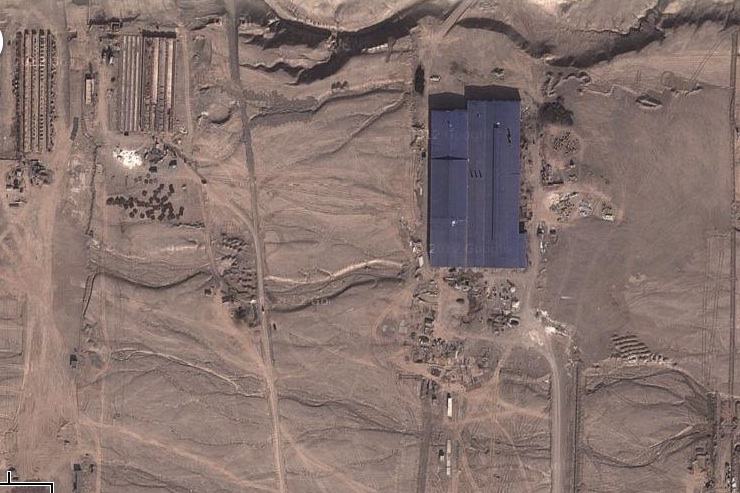
Buildings captured in a mysterious set of satellite images in the Chinese desert are probably just factories or commercial warehouses, not secret military facilities, experts say.
The images created a stir when an ex-CIA analyst told Wired.com that he had found mysterious structures in the desert around Kashgar, a city in China's remote Western desert that is part of the Xinjiang province. The site includes several large buildings, including a large U-shaped building. Some of the buildings at the site are nearly 350 feet (106 meters) long. In the wake of China's recent anti-satellite tests, it's not surprising that speculation exploded.
But the area is probably part of an initiative to develop the region into a major manufacturing or economic center, not a secret military base, said Stefan Geens, a technologist and geospatial blogger who has spent months in that area of China documenting its development.
"Kashgar was chosen as a special economic zone," Geens told LiveScience. "That means Shenzen-style development," he said, referring to the major industrial city in China that builds much of the world's products. [See Images of the 'Mysterious' Desert Structures ]
Armchair analysts
In general, more and more amateurs have taken to Google Earth to uncover mysterious structures, said Susan Wolfinbarger, an image analyst for the Geospatial Technologies and Human Rights Project of the American Association for the Advancement of Science. Earlier this year, a physicist used satellite imagery to identify geological mining activity in the desert in China. Other researchers have used such images to reveal the mysteries of Angkor Wat and even track the course of Guantanamo Bay over time, Wolfinbarger said.
To understand what's going on in an image, analysts look for rail, road or power lines, look at the footprint of the building, and they may even analyze the shadows cast by the buildings to infer their height, said Stuart Hamilton, the GIS program director at the Center for Geospatial Analysis at the College of William and Mary.
Sign up for the Live Science daily newsletter now
Get the world’s most fascinating discoveries delivered straight to your inbox.
But figuring out what people are using those buildings for is trickier than just understanding the infrastructure.
"This is really a classic example of you have two things going on. You can see quite clearly what the land cover is, but land use is a much more difficult problem," Hamilton told LiveScience.
No big secret
China announced its plans to build a special economic zone in Kashgar a few years ago, and has taken on a number of projects — from creating high-speed rail lines to the razing of the ancient Islamic buildings in the heart of the city — in order to achieve that goal, Geens said.
In fact, the region in question is located next to the rail lines and the airports, making it even more likely that the structures are industrial factories, Geens said.
In addition, some of the roads are partially covered in sand, and construction-related vehicles can be seen in some of the satellite images, suggesting the area is still being built, Hamilton said.
It's also unlikely to be a secret site because it's quite close to a major population area, and there are no barriers, towers or enclosures that would indicate a Chinese military operation, Hamilton said. While one structure in the complex somewhat resembles a helicopter testing area, there's no reason it would necessarily be related to military activities, he added.
What's more interesting is how quickly people decided these sites were mysterious in the first place, Geens said.
"People are so fascinated by the amount of the data in Google Earth and the transparency it affords them," he said. "I think it sometimes just goes to people's heads."
Follow LiveScience on Twitter @livescience. We're also on Facebook & Google+.

Tia is the managing editor and was previously a senior writer for Live Science. Her work has appeared in Scientific American, Wired.com and other outlets. She holds a master's degree in bioengineering from the University of Washington, a graduate certificate in science writing from UC Santa Cruz and a bachelor's degree in mechanical engineering from the University of Texas at Austin. Tia was part of a team at the Milwaukee Journal Sentinel that published the Empty Cradles series on preterm births, which won multiple awards, including the 2012 Casey Medal for Meritorious Journalism.










